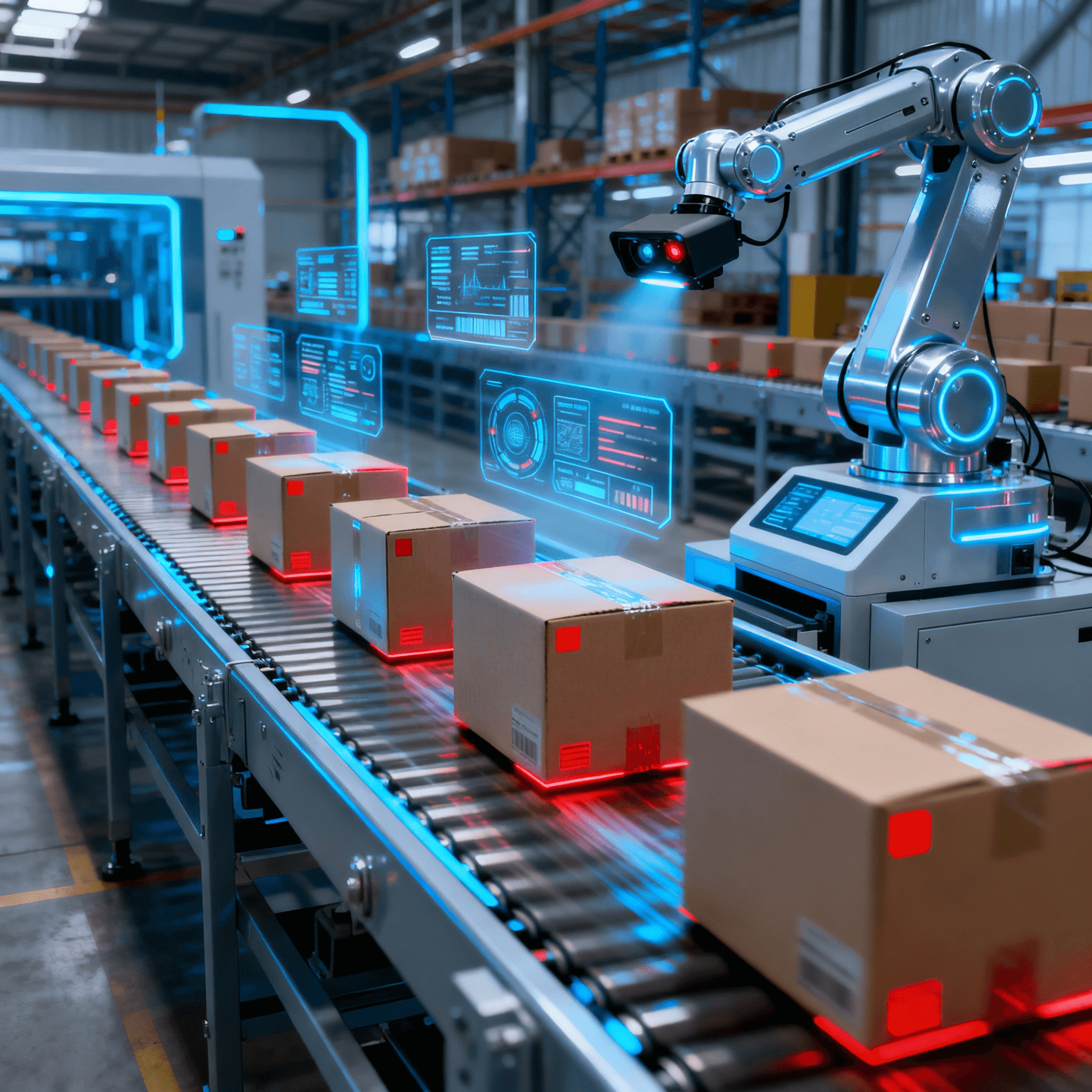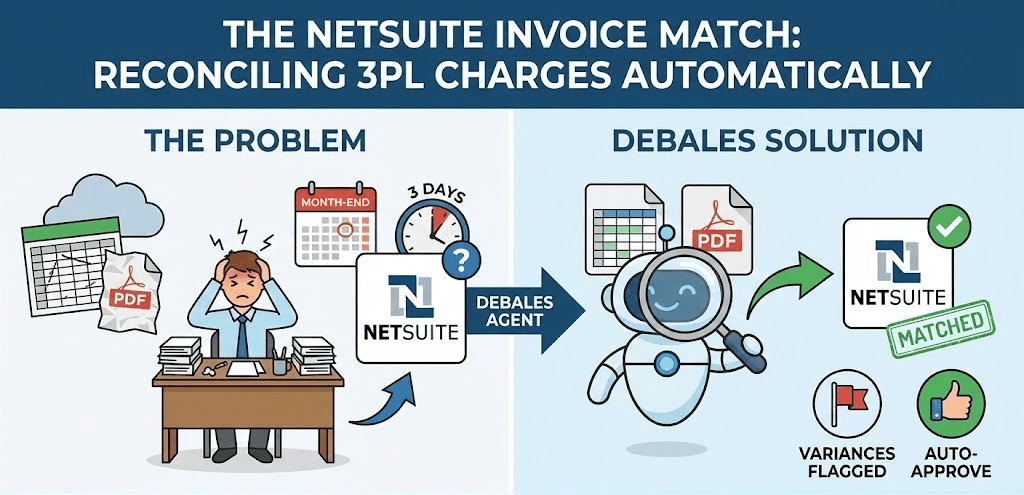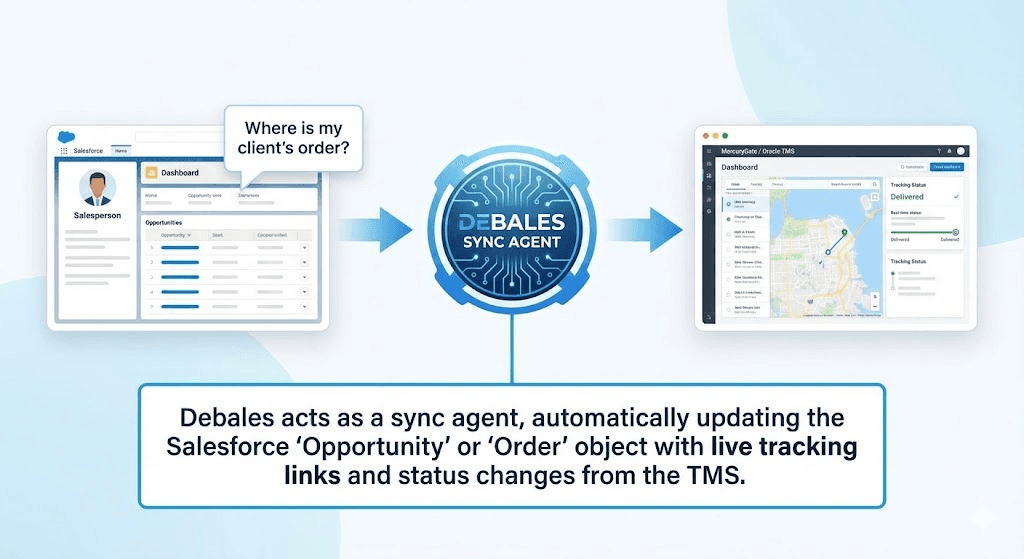Can AI Be Used for Automated Quality Control in Logistics?
Wednesday, 1 Oct 2025
|
Can AI Be Used for Automated Quality Control in Logistics?
Every damaged product that reaches a customer costs far more than the item's value—it erodes trust, generates returns, triggers replacements, and damages brand reputation. Yet traditional quality control approaches struggle with consistency: human inspectors fatigue after hours of repetitive checking, miss subtle defects under time pressure, and introduce subjective variability that creates inconsistent standards.
The logistics industry faces a quality control paradox: customer expectations for perfect orders have never been higher (99%+ fulfillment accuracy demanded), while operational pressures—faster throughput, labor shortages, cost constraints—make achieving these standards through manual inspection increasingly impossible.
AI-powered automated quality control resolves this paradox. Computer vision systems inspect 100% of products at production speeds, detecting defects with 99%+ accuracy that surpasses human capability, operating 24/7 without fatigue, and reducing inspection costs by 40-50% while simultaneously improving quality outcomes. For logistics leaders balancing quality imperatives with operational efficiency, AI quality control isn't experimental technology—it's rapidly becoming industry standard.
Wondering how AI "sees" defects humans miss or achieves inspection speeds impossible manually? The answer lies in deep learning models trained on millions of defect examples.
The Quality Control Challenge in Modern Logistics
Traditional quality inspection faces fundamental limitations:
Human Inconsistency: Inspectors identify 70-80% of defects on average, with performance declining throughout shifts due to fatigue and monotony
Speed Limitations: Manual inspection creates bottlenecks—inspectors checking 30-60 items per minute while production lines move 300+ items per minute
Subjectivity: Different inspectors apply varying standards, creating inconsistent quality criteria
Cost Structure: Labor-intensive inspection requiring multiple shifts across multiple facilities generates significant ongoing costs
Limited Data Collection: Manual processes capture minimal quality data, preventing root cause analysis and continuous improvement
Reactive Rather Than Preventive: Traditional inspection catches defects after they occur rather than preventing them during production
For context on how AI transforms traditional processes, explore What's the Difference Between AI, Machine Learning, and Automation in a Warehouse Context?.
How AI Transforms Quality Control in Logistics
1. Computer Vision for Visual Defect Detection
AI-powered computer vision systems automate visual inspection with superhuman accuracy and consistency.
Core capabilities:
- Surface defect detection: Identifying scratches, dents, discolorations, cracks, and material imperfections on products and packaging
- Dimensional verification: Measuring product dimensions and tolerances with precision exceeding manual methods
- Label and printing inspection: Verifying barcode quality, text legibility, label placement, and print accuracy
- Assembly verification: Confirming correct component placement, proper assembly, and completeness
How it works:
High-resolution cameras capture images at production speed while deep learning algorithms—trained on millions of defect examples—analyze each image in milliseconds, classifying products as pass/fail and categorizing specific defect types.
Performance benchmarks:
- 99%+ detection accuracy surpassing human inspection rates of 70-80%
- Inspection speeds of 300-1,000+ items per minute matching production line throughput
- 24/7 operation without performance degradation from fatigue
- Consistent standards applied uniformly across all inspected items
Learn about computer vision capabilities in How Computer Vision Technology Helps in Logistics Operations.
2. Automated Packaging Quality Inspection
Packaging defects—seal failures, contamination, labeling errors—represent major sources of customer complaints and returns. AI systems automate comprehensive packaging inspection.
Packaging inspection capabilities:
- Seal integrity verification: Detecting incomplete seals, tears, or weak points that could compromise product freshness
- Label accuracy checking: Verifying correct product labels, barcodes, expiration dates, and regulatory information
- Contamination detection: Identifying foreign materials, spills, or cleanliness issues
- Packaging damage assessment: Detecting dents, punctures, misalignment, or structural defects
Real-world impact:
Cognex reports that AI vision systems identify packaging defects with 99.5% accuracy while reducing false positives by 80% compared to rule-based systems, enabling manufacturers to eliminate defects at the source rather than just catching them downstream.
Business outcomes:
- 50% reduction in quality control costs through automated inspection
- 30-40% decrease in customer returns from packaging-related issues
- Elimination of costly product recalls by catching defects before shipment
3. Incoming Goods Quality Verification
Beyond manufactured products, AI inspects incoming shipments at warehouse receiving docks—verifying product quality, detecting damage during transit, and ensuring supplier compliance.
Receiving inspection automation:
- Damage assessment: Automated detection of shipping damage (broken pallets, crushed boxes, water damage)
- Quality verification: Confirming incoming goods meet quality specifications before acceptance
- Count accuracy: Using computer vision for automated piece counting and verification
- Supplier compliance tracking: Creating quality scorecards based on inspection data
Operational advantage: Automated dock-to-stock inspection reduces receiving cycle times by 40-60% while improving inventory accuracy through consistent quality verification.
Understand how this connects to broader warehouse operations in How Robots and AI Are Transforming Warehouse Operations.
4. Predictive Quality Analytics
AI doesn't just detect defects—it predicts where and why they occur, enabling preventive action.
Predictive capabilities:
- Defect pattern recognition: Identifying correlations between production conditions (temperature, humidity, line speed, equipment settings) and defect occurrence
- Early warning systems: Detecting gradual quality degradation before it produces rejectable defects
- Root cause analysis: Automatically correlating defect types with specific equipment, materials, or process variables
- Preventive maintenance triggers: Alerting maintenance teams when equipment performance deviations predict quality issues
Strategic value: Instead of simply catching bad products, AI identifies and eliminates defect causes—a shift from reactive inspection to proactive quality assurance.
Learn about predictive maintenance in Can AI Predict When Delivery Trucks or Warehouse Machines Need Maintenance?.
5. Real-Time Quality Dashboards and Traceability
AI quality systems generate comprehensive data enabling real-time monitoring and complete traceability.
Data and visibility features:
- Real-time defect tracking: Live dashboards showing defect rates, types, and locations across facilities
- Product-level traceability: Complete inspection history for each serialized product
- Trend analysis: Identifying quality patterns over time, by shift, by production line, or by material lot
- Regulatory compliance: Automated documentation meeting industry quality standards (ISO, FDA, etc.)
Decision support: Instant visibility into quality metrics enables rapid response to emerging issues and data-driven continuous improvement initiatives.
Real-World AI Quality Control Success Stories
Global Automotive Manufacturer: Metal Parts Inspection
A major automotive components manufacturer implemented AI-powered visual inspection:
Challenge: Manual quality control missing microscopic defects in precision metal parts
Solution: Dual-station AI vision system with top and side cameras, automatic flipping, and laser-triggered rejection
Results:
- 99.8% defect detection accuracy (vs. 75% manual inspection)
- Inspection speed increased 5x matching production throughput
- $2.3 million annual savings from reduced scrap and rework
Consumer Goods Company: Packaging Inspection Automation
A global consumer packaged goods company deployed AI packaging inspection:
Implementation: Multi-class defect detection system identifying seal faults, label misalignment, smudges, barcode errors, and contamination
Technology: Deep learning models processing images at 500 packages per minute
Impact:
- 50% reduction in quality control labor costs
- 35% decrease in customer complaints related to packaging defects
- Near-elimination of costly product recalls from packaging failures
Logistics Provider: Warehouse Receiving Quality Control
A major 3PL implemented computer vision at receiving docks:
Application: Automated inspection of incoming shipments for damage and quality verification
Capabilities: Real-time damage assessment, supplier quality scoring, automated exception handling
Outcomes:
- 60% faster dock-to-stock processing times
- 40% reduction in mis-received inventory
- Improved supplier accountability through data-driven quality metrics
Explore related automation examples in Real-World Examples of AI Route Optimization.
Measurable Business Benefits
Organizations implementing AI-powered quality control report consistent improvements:
Quality Improvement
- 99%+ defect detection accuracy vs. 70-80% manual inspection
- 80% reduction in false positives compared to rule-based systems
- Near-elimination of customer returns from quality issues
- Consistent quality standards across all products and shifts
Cost Reduction
- 40-50% lower inspection costs through automation
- 30-40% reduction in scrap and rework via early defect detection
- Avoidance of costly recalls through comprehensive inspection
- Labor redeployment to higher-value tasks from repetitive inspection
Operational Efficiency
- 5-10x faster inspection speeds matching production throughput
- 24/7 operation without performance degradation
- Elimination of inspection bottlenecks in production flow
- Scalable quality supporting volume growth without proportional staff increases
Strategic Advantages
- Complete traceability for regulatory compliance and root cause analysis
- Continuous improvement through data-driven defect trend analysis
- Brand protection through consistent delivery of quality products
- Competitive differentiation via superior quality reputation
For insights into how quality improvements impact customer satisfaction, read How AI is Making Last-Mile Delivery More Efficient.
AI Quality Control Technologies
Deep Learning and Computer Vision
Modern AI inspection leverages convolutional neural networks (CNNs) trained on massive defect image datasets:
Training process:
- Systems learn from thousands of labeled defect examples
- Models recognize defect patterns across varying lighting, angles, and product variations
- Continuous learning improves accuracy as more data accumulates
- Transfer learning applies knowledge from one product to related products quickly
High-Resolution Imaging Hardware
AI quality systems integrate sophisticated camera and lighting equipment:
- High-speed cameras capturing crisp images at production speeds
- Specialized lighting (structured light, backlighting) highlighting defect features
- Multi-angle camera arrays providing comprehensive product views
- Integration with production lines for seamless automated inspection
Edge Computing and Real-Time Processing
Quality decisions require instant feedback—AI systems use edge computing for sub-second processing:
- Local processing eliminates cloud latency
- Real-time reject mechanisms removing defective products immediately
- Instant operator alerts for critical quality issues
- Reduced bandwidth requirements processing locally
Learn about the algorithms enabling these capabilities in Most Common AI Algorithms Used for Route Planning and Demand Forecasting.
How debales.ai Enables Intelligent Quality Control
At debales.ai, our AI platform integrates quality control intelligence designed for logistics operations:
Automated Visual Inspection: Computer vision systems for warehouse receiving, outbound verification, and in-process quality checks
Predictive Quality Analytics: Machine learning identifying defect patterns and correlating with operational conditions
Real-Time Quality Dashboards: Unified visibility into quality metrics across warehouse networks
Traceability and Compliance: Complete inspection history supporting regulatory requirements and root cause analysis
Integration Ready: Seamless connection with existing WMS, ERP, and production systems
Explainable AI: Transparent reasoning showing why products are flagged and what specific defects are detected
Our approach combines quality intelligence with the broader orchestration capabilities described in What is an AI-Powered Control Tower in Logistics?.
Implementation Best Practices
Successful AI quality control deployments follow structured approaches:
Phase 1: Pilot with High-Impact Products
- Select products where quality issues create maximum cost/risk
- Deploy AI inspection in controlled environment
- Validate accuracy against manual inspection baseline
- Demonstrate ROI before scaling
Phase 2: Training and Data Collection
- Gather diverse defect examples for model training
- Ensure balanced datasets (good and defective samples)
- Involve quality experts in labeling and validation
- Continuously expand training data library
Phase 3: Production Integration
- Integrate AI inspection into production workflows
- Establish reject handling procedures
- Train operators on system monitoring and exception handling
- Connect quality data to analytics platforms
Phase 4: Continuous Improvement
- Monitor system performance and accuracy metrics
- Retrain models with new defect examples
- Expand to additional product lines and facilities
- Leverage quality data for process optimization
For data requirements guidance, visit What Kind of Data is Needed to Train an Effective AI Model for Supply Chain Optimization?.
The Future: AI Quality Orchestration
Next-generation quality systems will integrate inspection, prediction, and automated corrective action—AI detecting defect trends, automatically adjusting production parameters to prevent future defects, and orchestrating quality across entire supply networks.
This vision aligns with the digital twin concept explored in What is a Digital Twin and How is it Used in Logistics AI?.
Strategic Imperative: Quality as Competitive Advantage
In markets where customers expect 99%+ perfect orders, quality isn't just operational concern—it's competitive differentiator. Organizations still relying on manual inspection face widening quality gaps against AI-enabled competitors achieving 99%+ detection accuracy at 50% lower costs.
The question isn't whether AI quality control works—proven implementations demonstrate superior outcomes across industries. The question is how quickly your organization can deploy AI to protect brand reputation, reduce costs, and delight customers with consistently perfect products.
Ready to transform quality control from cost center into competitive advantage?
Discover how debales.ai's AI-powered platform delivers automated inspection, predictive quality analytics, and real-time visibility—ensuring every product meets standards while reducing costs and improving efficiency.
Book a demo with debales.ai today and experience quality control reimagined for operational excellence.


